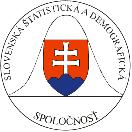Substantial future increase expected in supply of high and medium qualified people in Europe
Projections for 2020 indicate that the EU will have an extra 26 million high and medium qualified people in the labour force aged 25 and over.
Changing qualification structure of the labour force aged 25 and over at the national level, shares in %, EU-25 without Malta, plus Norway.
The new Cedefop medium-term forecast on future skill supply predicts substantial increases in the supply of adults with medium and high level qualifications that are available to work.
This indicator expresses for 2007 the proportion of people aged 25 and over in the EU labour force by their level of education, and forecasts this for 2020. This can also be broken down by age or sex, and could be complemented by indicators that look at the demand for skills, although these two sets of results are not directly comparable yet due to methodological reasons.
Key points
- A substantial rise in the number of adults in the labour force with a high level of education (ISCED 5 and 6) is predicted: more than 20 million for the EU-25, equivalent to a 40% increase between 2007 and 2020. The highest increases are expected in Portugal and Poland, with average annual growth for the period of over 5%. However, Denmark is expected to have the highest proportion of highly qualified people relative to the rest of the labour force (see chart).
- The supply of adults with medium level qualifications (ISCED 3 and 4) that are available to work is also expected to rise over the period. In Europe, many people at this level have graduated from vocationally-oriented programmes. An increase of over 6 million people would imply on average close to 0.5% annual growth. The largest growth is expected in Spain and Portugal at around 4%, two countries with relatively low proportions of their labour force having medium level qualifications (see chart). The Czech Republic is expected to remain the country with the highest relative proportion of the labour force with medium level education.
- Almost all EU countries should expect to see a contraction in their labour force supply of people with low level qualifications (up to lower secondary education; ISCED 0 to 2). Overall 17 million fewer adults in this category are expected to be available for work in 2020. Despite a large drop, Portugal is expected to remain the country with the highest relative proportion of the labour force with low qualifications.
The data are, among other, based on Eurostat’s Labour Force Survey (EU LFS), and are subject to its methodology.
More results and information about the methodology is available in the full report:
Cedefop. Future skill supply in Europe. Medium-term forecast up to 2020: synthesis report. Luxembourg: Office for Official Publications of the European Communities, 2009.






